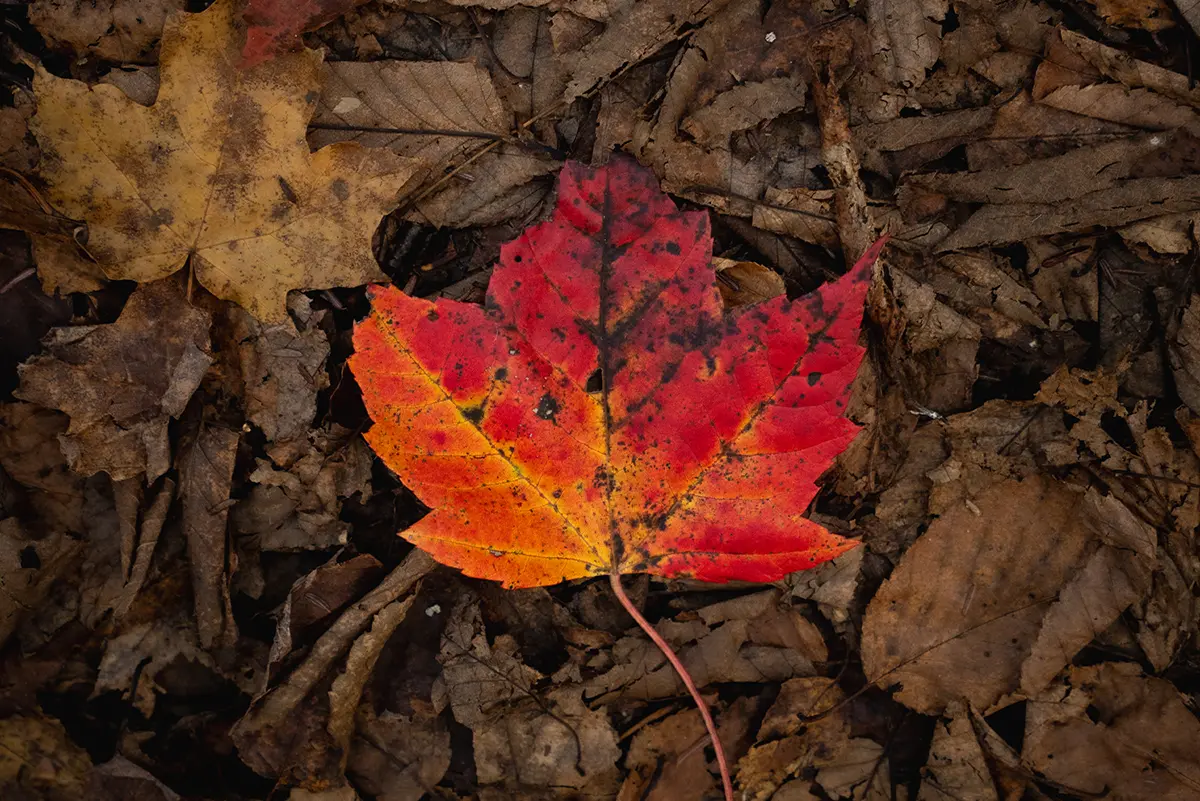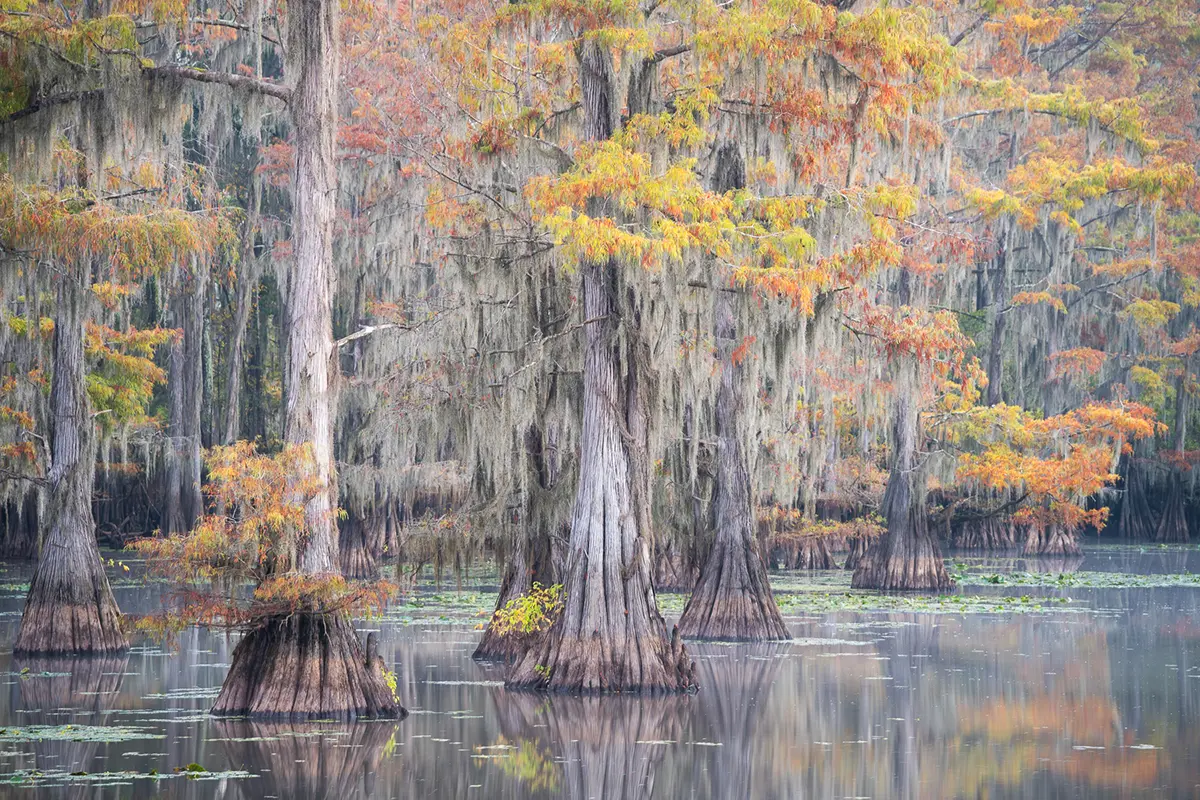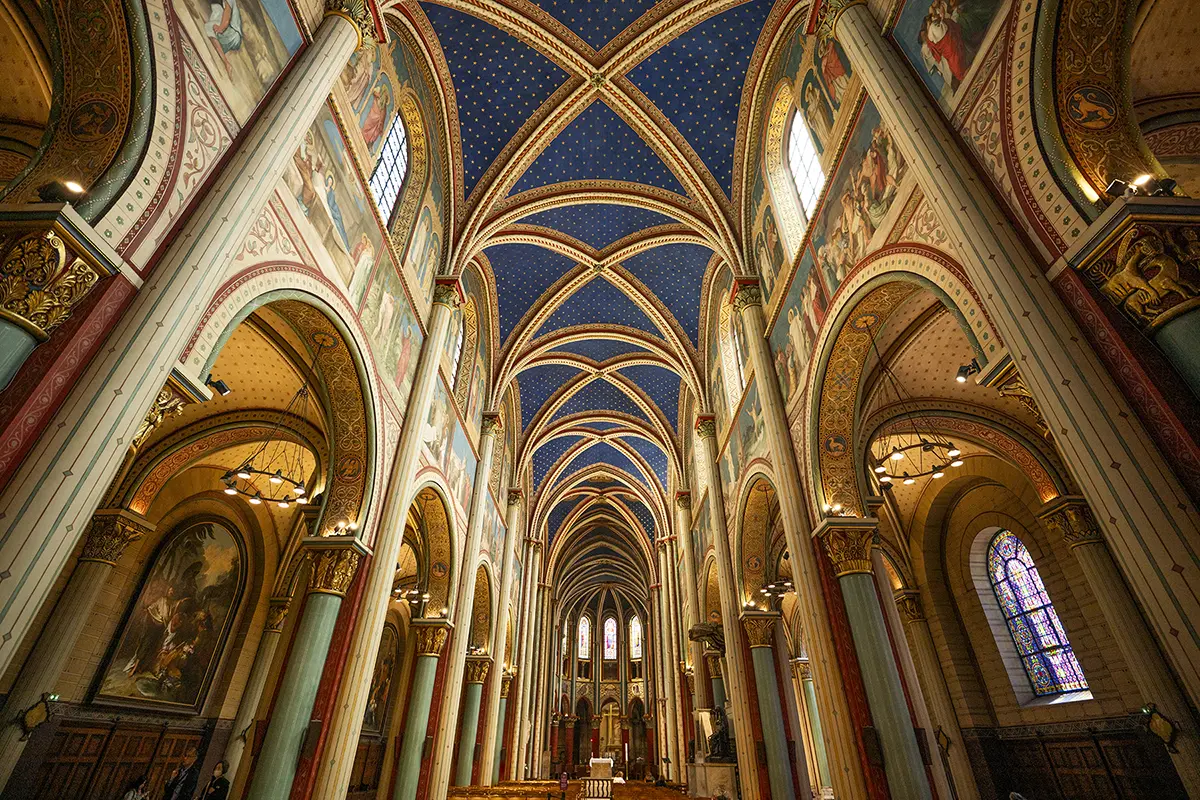
Parisian Promenade
André Costantini does an ultra-wide-angle walkabout in the City of Light with his Tamron 16-30mm F2.8 G2 lens.
Author: Jenn Gidman
Images: André Costantini
Share Article
André Costantini does an ultra-wide-angle walkabout in the City of Light with his Tamron 16-30mm F2.8 G2 lens.
For André Costantini, Paris isn’t just a feast for the eyes—it’s a destination best experienced one step at a time. “Paris has a great subway system, but it’s also a fantastic walking city,” he says. “There’s really no better way to see it, and to document it, than by wandering around and doing some street photography.”
During his most recent visit in May, André stayed in the heart of the 4th arrondissement, not far from the Louvre and Notre Dame, where he captured a blend of Old World charm and modern energy. With the Tamron 16–30mm F/2.8 Di III VXD G2 ultra-wide-angle lens for his Nikon mirrorless camera system, André roamed the boulevards and backstreets, photographing everything from architectural gems to small, unexpected details found in Paris’ shops and alleyways.
“The 16-30mm F2.8 G2 is a terrific lightweight, compact travel lens,” André notes. “It doesn’t stand out as a huge piece of glass, which is handy when you’re trying to take some low-key, unobtrusive street photos. Combined with its fast F/2.8 aperture and exceptional sharpness, the 16–30mm proved to be an ideal companion during my walkabout.”
Check out some of the scenes that André stumbled upon during his Parisian adventures.
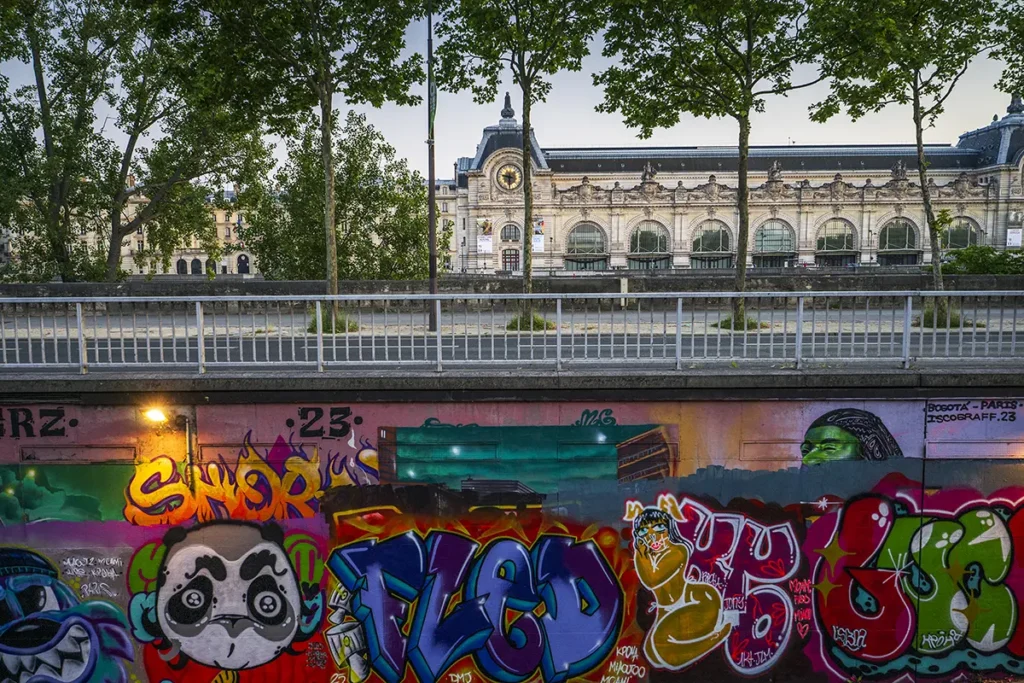
This photo with the Orsay Museum in the background was the perfect combination of old and new Paris, a clash of styles between the elegant old-school museum and the modern expression of ideas via that colorful graffiti. It makes you think: What was Paris, and what is Paris today?
I was also drawn to the details of that small lamp glowing on the left side of the frame. It was late in the day, when the lights had just come on, and although you can’t fully see it, you can glimpse a tiny section of light from another lamp just out of view on the right. Those two light sources create a quiet relationship across the image that keeps it subtly balanced with the clock tower in the background. Put your finger over the lamp, and the image becomes slightly less interesting.
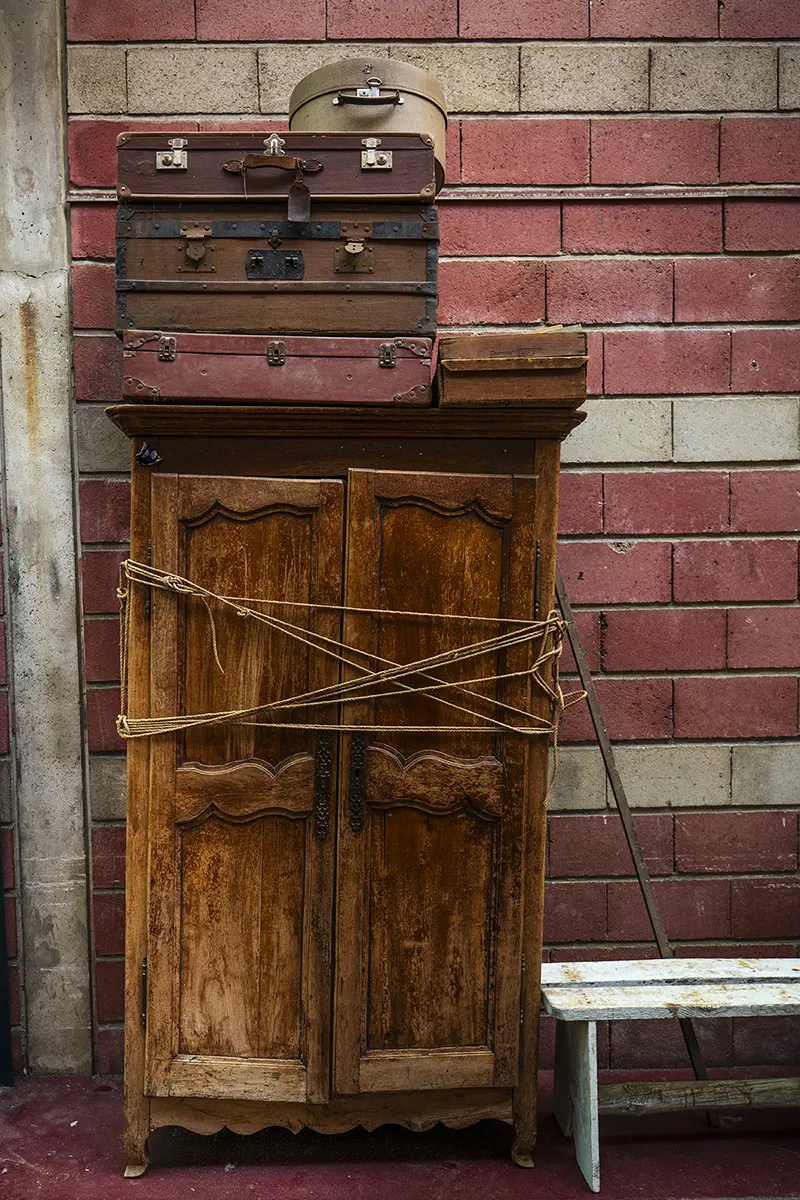
While wandering through an area of the city known for its antique markets, I came across this scene of valises and hatboxes stacked on top of a weathered old armoire. It looks somehow stylized—both intentional and haphazard at the same time. I framed it just as I found it, using my 16–30mm F2.8 G2 to capture the full context of the scene: the textures of the old furniture and suitcases, the worn cobblestones beneath, and the brick walls that served as a backdrop. There was something quintessentially Parisian about it.
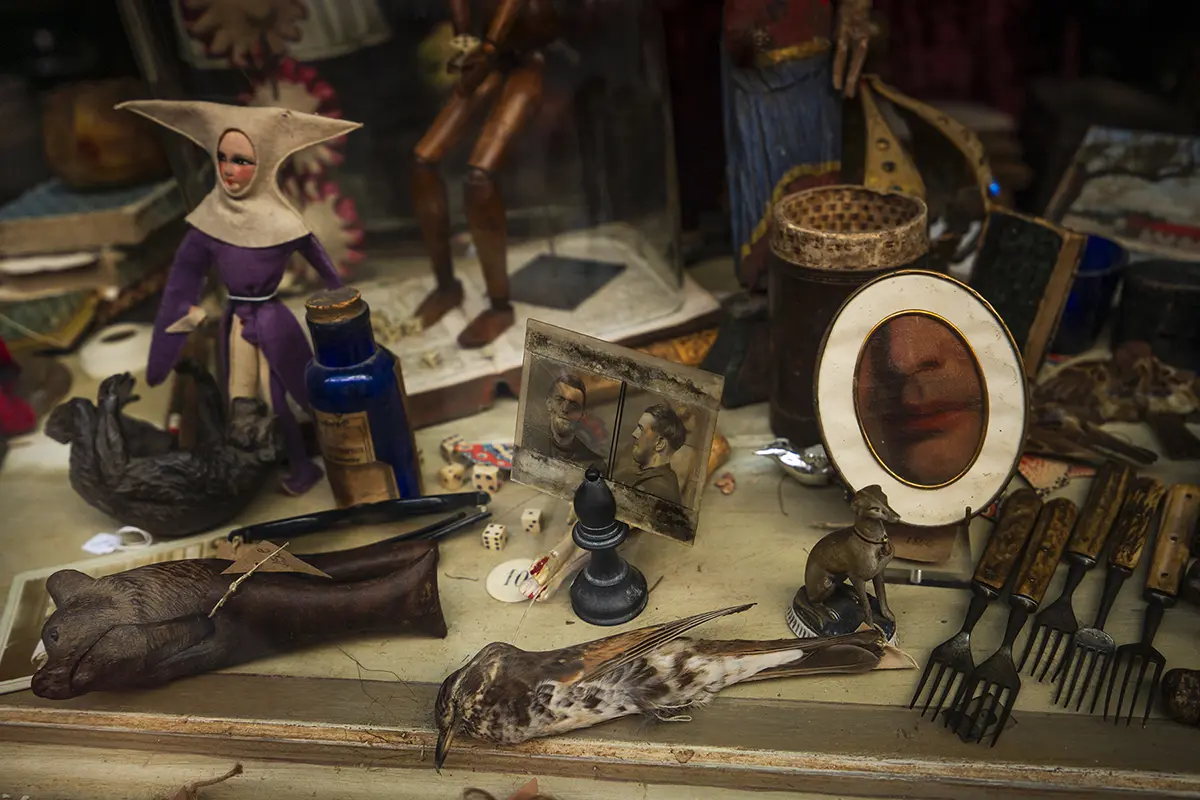
While wandering through one of Paris’s antique markets, I came across a table overflowing with oddities—everything from old pictures and silverware to chess pieces, dice, figurines, and even what looked like a taxidermied bird. It felt less like a sales display and more like a carefully constructed diorama, with every object intentionally placed in relation to the others.
When you arrange all of these objects together, some of which are interesting and some of which are more mundane, it starts to create a whole new narrative. It’s fun to examine the scene as a whole and say, ‘Well, what does this mean?’ It likely meant something to the person who arranged it. The Tamron 16-30mm F2.8 G2 allowed me to capture the scene in full, in all of its layered eccentricity, pulling in the surrounding context while keeping the individual objects crisp and detailed.

I wandered into the Church of Saint-Germain-des-Prés, a small church not far from Notre Dame, and was mesmerized by its interior. Typically when I’m shooting scenes like this inside, I’ll switch my compositions up and take at least a dozen shots, then decide what works best. In this case, I tilted up, both to show off the ornate ceiling and to crop out some of the people in the scene. You can see I left a couple of people in there, in the lower left of the frame, but they almost look like they’re part of a painting on the wall.
I shot wide open at F2.8, since the light inside the church was low, which kept everything sharp and in focus. You’ll want a fast lens like the 16-30mm F2.8 G2 in European cities with churches and other venues that don’t offer the best lighting scenarios.
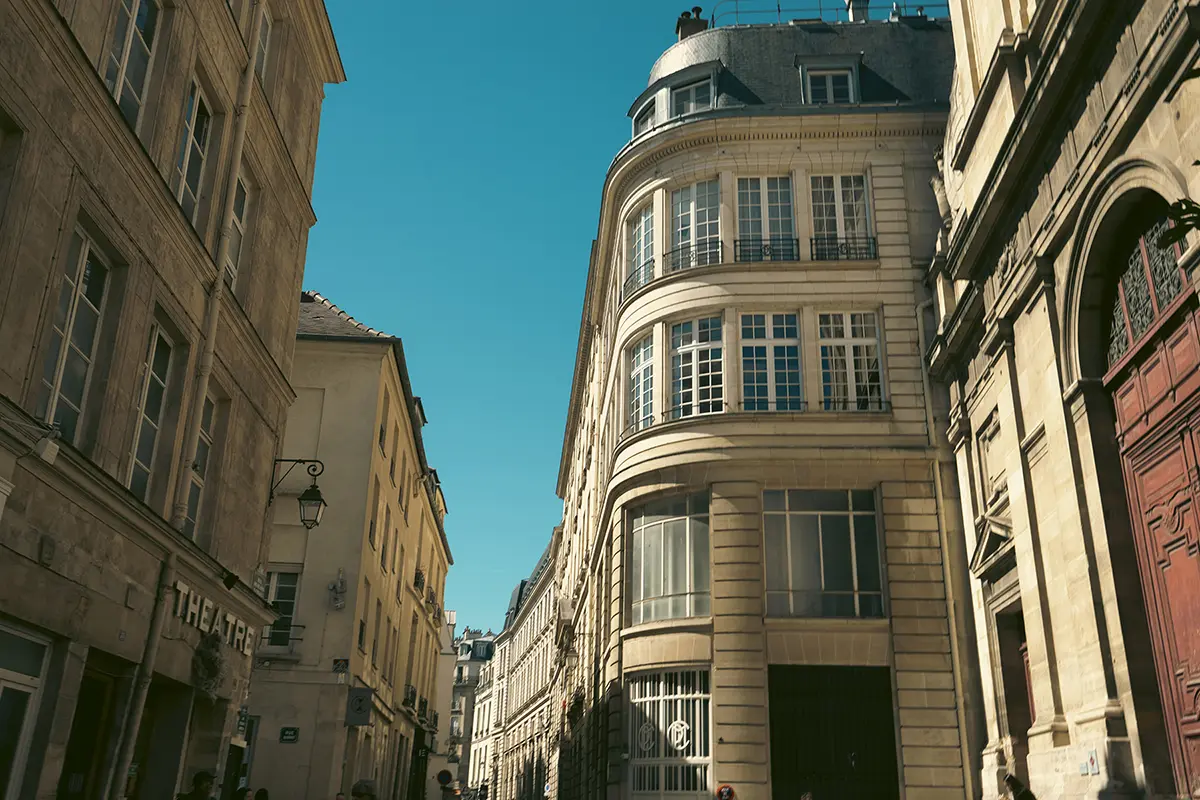
When shooting architectural exteriors, it’s all about color, form, and how you can best use negative and positive space. The composition in this photo is all about balance—that reddish door contrasting beautifully against the aqua-blue sky, with the natural light illuminating just that one section of the building, creating a subtle highlight that anchors the frame. It’s almost like three separate photos stitched together into one panoramic story.
I did do some tonal tweaks while editing to give it a slightly stylized feel, almost like a shot out of a Wes Anderson film. What I especially love about images like this is that they’re unmistakably Parisian. It’s important to try to find scenes that not only inspire you, but also offer a specific connection to the place you’re in.
To see more of André Costantini’s work, check out his website or Instagram.
